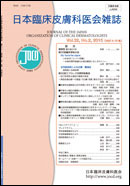Volume 32, Issue 2
Displaying 1-6 of 6 articles from this issue
- |<
- <
- 1
- >
- >|
Article
-
2015 Volume 32 Issue 2 Pages 181-186
Published: 2015
Released on J-STAGE: August 27, 2015
Download PDF (1922K) -
2015 Volume 32 Issue 2 Pages 187-192
Published: 2015
Released on J-STAGE: August 27, 2015
Download PDF (1864K) -
2015 Volume 32 Issue 2 Pages 193-197
Published: 2015
Released on J-STAGE: August 27, 2015
Download PDF (1873K) -
2015 Volume 32 Issue 2 Pages 198-201
Published: 2015
Released on J-STAGE: August 27, 2015
Download PDF (1806K) -
2015 Volume 32 Issue 2 Pages 202-218
Published: 2015
Released on J-STAGE: August 27, 2015
Download PDF (2836K) -
2015 Volume 32 Issue 2 Pages 219-225
Published: 2015
Released on J-STAGE: August 27, 2015
Download PDF (10269K)
- |<
- <
- 1
- >
- >|
